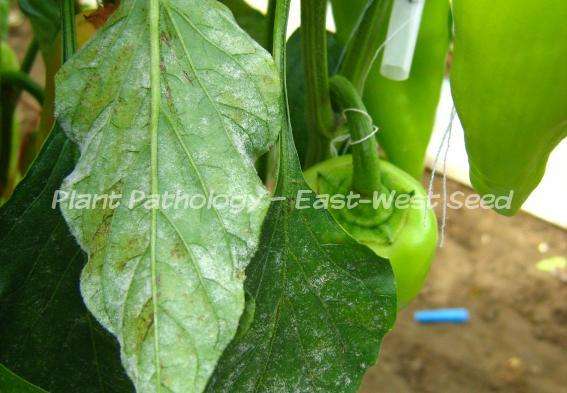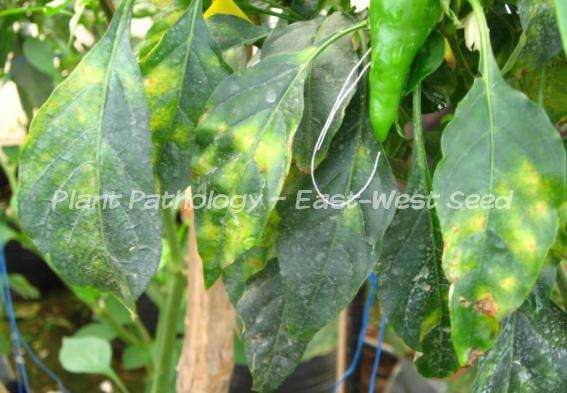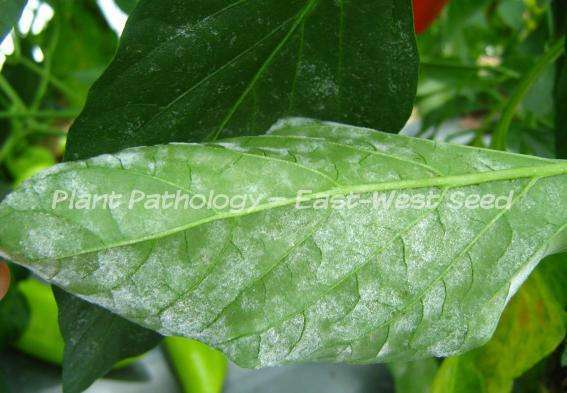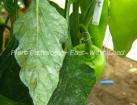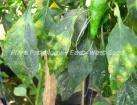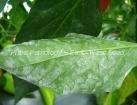Causal Agent:
Fungus (Oidiopsis sicula)
| Characteristic Symptoms: | |
 |
The most common sign of the disease is the white powdery mold/pustules on the underside of the leaves. |
 |
Pale yellow spots or lesions which later become necrotic at the center may be observed on the upper leaf surface. |
 |
Defoliation is common when infection is severe, thus fruits usually become susceptible to sunscald. |
| Conditions for Disease Development: | |
 |
The disease occurs in both dry and humid climates.
|
 |
The pathogen has a wide host range.
|
 |
Spores can germinate at any relative humidity when temperature is cool (15-25°C).
|
 |
Once infection has occurred, warm days (above 30°C) with cool (below 25°C) and humid nights favour rapid disease development. |
 |
Spores are carried by wind or rain splash to new hosts. |
 |
Disease incidence is greater using furrow or drip irrigation than using overhead irrigation. Spore germination is inhibited by water on plant surfaces for extended periods. |
| Management and Control: | |
 |
Use resistant varieties, if available. |
 |
Provide good air circulation to minimize disease incidence and severity.
|
 |
Avoid excessive use of N fertilizer or use a slow-release fertilizer. |
 |
Remove weeds that may serve as alternate hosts of the fungus.
|
 |
Avoid furrow irrigation when infection is high.
|
 |
Apply sulfur-based fungicide (e.g. Kumulus®) or thiophanate-methyl (e.g. Tango, Topsin®) at the early sign of the disease. |
 |
When plants are susceptible, apply protectant and curative fungicides such as azoxystrobin (Amistar®, MiradorⓇ, RobatoⓇ), difenoconazole (e.g. ScoreⓇ, MontanaⓇ, PursueⓇ, BashⓇ), tebuconazole (e.g. Folicur®). |
To view other diseases, click here.
Need more help? Ask the Doctor.



